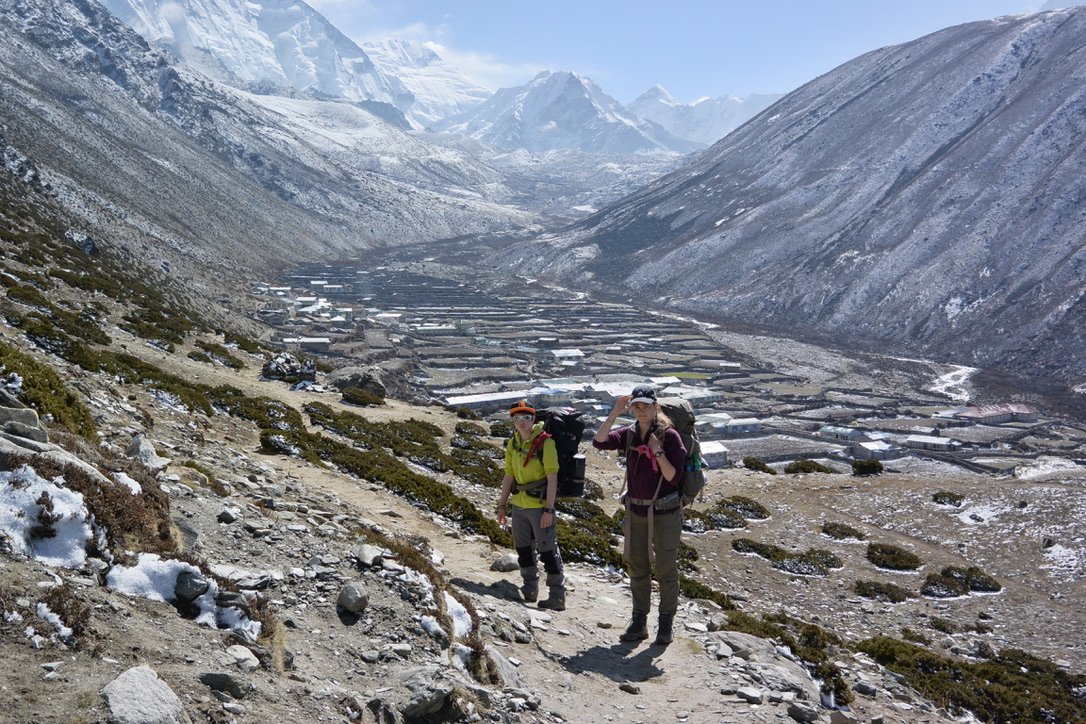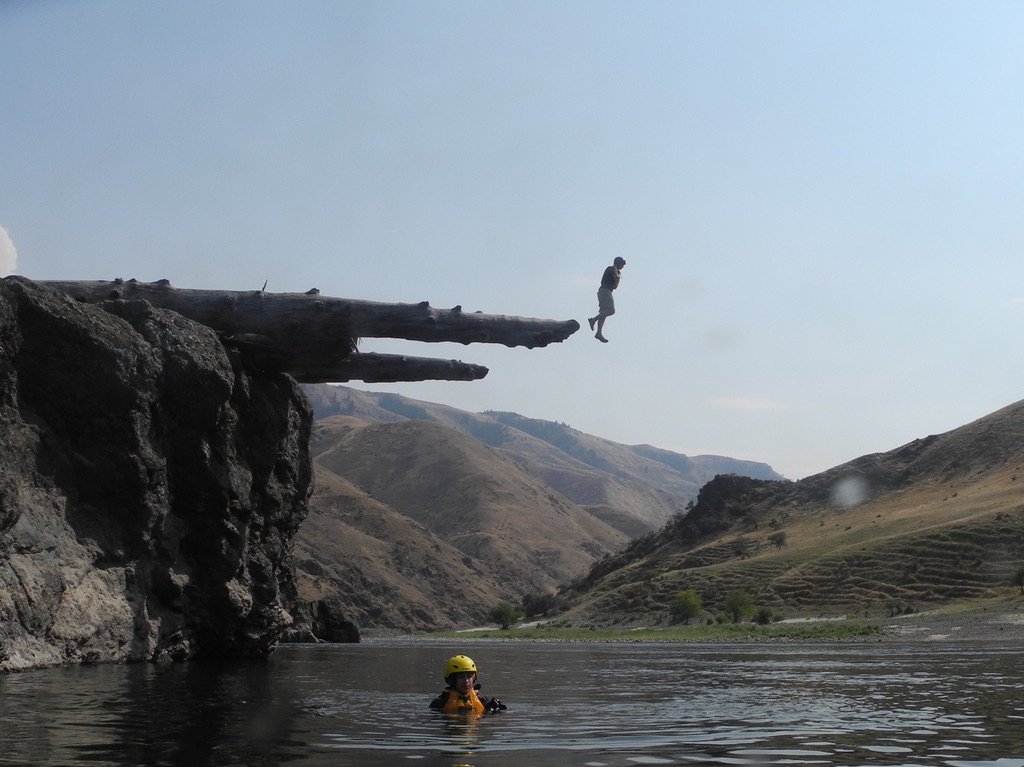
Our Practice
We teach and practice Adventure Leadership. Our mission is to develop adults into effective and safe adventure leaders of youth. Youth service is a focal that gives adults a purpose beyond themselves.
A descriptive word we use regularly is “Praxis”—action informed by good thinking. Praxis is PRACTICE (learning to do something well) that is guided by THEORY (knowing why), DESIGN (knowing what’s important), and INTENTION (knowing what is wanted). Adventure leadership is a praxis of heading into an unknown part of the real world and safely returning as a bigger person.
The pursuit of adventure—where decisions and actions have consequences—can lead to bad things when undertaken without a clear praxis. At the Center, we teach how to take actions that are informed by good thinking. Successful adventuring makes life more vivid, interesting, and real.
The praxis of adventure leadership includes skill, preparation, good judgement, and a safe return.
Our Take on Adventure
The word “Adventure” gets a lot of use. We have a more specific meaning for the word. Our form of adventure has several qualities:
Human powered, where the human body is the means of motion.
Self-guided, where the people involved are responsible for their preparation, their execution, their safety and their success.
In the real world, with physical feedback and real consequences.
Expanded horizons, going where the adventurers having not been.
The adventurer has little control on what’s going on around him or her, but vast control over his or her own choices and actions.
These qualities make adventure real and direct. To prepare people to have real and direct experiences (“adventures”), we teach theory, design, mental models and clarity of intentions, right along with technical and physical skill, to effectively lead adventure activities.
What is happening inside the Adventure Leader’s head is just as important as what is happening in the real world. Yet too often, people head into the unknown thinking their gear will keep them safe. We emphasize that keeping your mind right is job one. Good thinking results in good actions.
Adventure involves risk. Unmanaged risk is danger. Effective adventure leadership minimizes danger by engaging risk intelligently, with vast self-preparation and self-discipline. The most important decision an adventure leader faces is the Go/No-Go Decision. Continue or turn-around? Push or back off? The Go/No-Go decision maker has a vast array of mental tools available to keep going when one should, and turn around before it’s too late. We prepare exhaustively to never be wrong when it really counts. Read on to learn about the theories and models we teach, and employ on our own adventures.
Implicit vs Explicit Design
This page is an example of Explicit Design. Explicit means directly stated, out there for all to see. Implicit means implied by not directly expressed.
Adventure Leadership requires explicit thinking because people need to understand why, not just how, to take an action. Adventurous actions have consequences. Implicit understandings can lead to vague, imprecise action. When our actions matter, our thinking matters even more.
The Center for Adventure Leadership is a learning organization
We prioritize the growth of our people. Great accomplishments come to people who work together and help each other to constantly grow. The five disciplines of a Learning Organization are team learning, shared vision, mental models, personal mastery, and systems thinking.
Peter Senge is the lead theorist about learning organizations.
-
Experiential Learning is learning by doing. The four stages of Experiential Learning are Concrete Learning—getting into your hands, Reflective Observation—stepping back and thinking about what is being learned, Abstract Conceptualization—thinking about how, where and why to use what is learned, and Active Experimentation—adventure! Experimentation is the E in Experiential, it’s about getting to the point where you can play with ideas, try new things, take risks, make mistakes, have fun with it, grow to master it because you are doing it. David Kolb is EL’s prime theorist and he stands of the shoulders of Dewey, Lewin and Piaget.
-
Action Research is iterative learning by design, trying out new ideas with intention and a plan. In Action Research we take a look and reflect on what’s going on; we make a plan to test what we think is happening; we act—try it out, push it, maybe until if fails; we step back and observe the results—what happened, to it or to us?; we refine our thinking and our doing to try to get it better, then run the cycle again. With each iteration, we may modify it, but mostly, we modify ourselves.
-
Systems Thinking helps us understand complexity, where forces, objects and qualities are interacting to create outcomes that come not from any particular part, but rather from the process of interaction itself. Systems Thinking includes understanding the dynamics of interconnectedness, synthesis, emergence, feedback loops, causality and the mapping of relationships and forces at work within the system.
The Pedagogy/Andragogy/Heutagogy Continuum
The PAH is both a sequence and a continuum, meaning that while pedagogy comes before andragogy, which comes before heutagogy, it is also true that these three learning modes are interrelated and often work simultaneously.
Pedagogy
Teacher-led instruction of things that are known, which the student is working to master. In pedagogy, it is the teacher who decides if the learning has been learned.
Andragogy
Student-guided learning, sometimes with a teacher in support, of things that are known, where figuring them out allows a student to solve a problem that is important to the student, to the satisfaction of the student.
Heutagogy
Discovery learning, learning something that is not previously known. This can be a breakthrough, an extended horizon, a new connection of known information, or even the transformation of a person to a new, more capable version of him our herself, who in this new version can accomplish things the previous version were unable to accomplish. Heutagogy enlarges the world we understand and enlarges the people in this world.
-
Single Loop Learning is how we learn to do a known thing correctly or fixing a mistake with a known solution. Double Loop Learning is about finding an alternative solution to a known problem. Triple Loop Learning comes into play when we realize we don’t understand the problem, or that we are working on the wrong problem. When I’m working on the wrong problem, no known solution to that problem can provide a satisfactory solution to the problem I am actually facing but don’t understand.
-
Play is wrongly understood to be the domain of children. Play is in fact the domain of all creative endeavor, when we enjoy the act of learning and embrace the necessity of failure as the path to improvement and success. Because play involves a healthy acceptance of failure, Creative Destruction becomes a method to find limits, explore possibilities, and thrive in the process of moving from inability to ability—the satisfaction of experiencing growth. Leadership itself has been described as meaning “go forth and die”, meaning, “as you improve, you may let the previous, less able version of yourself perish”.
-
Designing with Positive Space—space defined by what is in it--means only using design elements that are already know, proven and available. Designing with Negative Space—space defined by its emptiness, its not-fullness—means admitting that new things must be learned, tried and created. This is not the usual definition of positive (good) and negative (bad). This understanding of Negative Space allows for room to grow by infilling our understanding and to grow by expanding our understanding.
Maslow’s Hierarchy of Needs
Many are familiar with this concept because it is part of any introduction to “positive psychology”. While much of the practice of psychology is trying to understand what is wrong with a patient, and proposing a repair (diagnose and prescribe), Maslow studied the psychology of success: what’s going on in peoples heads when they are thriving?
What he discovered is that when people are doing their best and growing (“self-actualizing”), there is a lot of good stuff going on at lower levels that support that thriving. Not only do people not thrive until these lower levels are doing well, if something gets out of whack down there, the thriving (self-actualizing) stops until the lower level functions are straightened out and working again. Maslow called these lower level functions “deficit needs”, or “D-needs”. A person simply can’t do the high-level stuff when deficit needs are not met.
Furthermore, and this is critical to effective adventure leadership, any person must know how their own deficit needs are met, and they need to be able to manage their own deficit needs themselves if they are to sustain any self-actualization efforts. Meaning, a leader cannot meet someone else’s D-needs, and they cannot meet yours, at least for long. Can people help each other? Absolutely, and we should. Can a person do someone else’s D-need lifting, indefinitely? NO.
This means that a big part of an adventure leader’s job is to help people to meet their own D-needs while they are learning, and get the D-load transferred back to them as soon as possible. Critically, the leader is responsible to curtail their own or a follower’s involvement until they have shown (that is, demonstrated, not just replied “I’m fine*”). that they are on top of their own D-need business. This brings us back to the ever-important Go/No-Go Decision.
When real risks are being faced (that is, it’s a real adventure) and a follower cannot adequately meet his or her own D-needs, it is time for a reassessment. Quite likely, it’s time for the turn-round call, the No-Go Decision. The leaders cannot control energy and consequences in a system where followers cannot self-manage. The leader’s task is then to get the follower back to safety, into a learning situation, where they can rest, assess, attend to their needs, and try again at a future time. Understanding Malsow’s Hierarchy in the adventure leader context helps us prevent predictable mistakes by overwhelmed and underperforming team members.
*FINE means Freaked Out, Insecure, Neurotic, Emotional.
To refresh our understanding of the Hierarchy of Needs, let’s put it in an adventure context.
Level 5 is supported by Levels 1 through 4. When an essential need at any level is not being met, attention reverting to that level and that need. A hypothermic climber cannot provide self-care. An unskilled kayaker cannot perform a rescue. An isolated teammate cannot contribute. A self-doubting skier will choke (freeze in the face of performance pressure), mentally fall behind their form, and crash. Meeting one’s own D-needs is necessary to truly Self-actualize.
Level 5
Self-actualization is putting it all together to accomplish something big, and to live into the persona of the version of oneself who did that.
Level 4
Self-Esteem is having a positive self-image that is resilient in the face of challenges and setbacks, where one does not lose confidence because of failure, but rather learns, grows and tries again.
Level 3
Love and Belonging means we have confidence that we are respected, supported, and wanted; that our contribution is important and that even when we are being corrected, it is the belief that we can and will improve to be a better version of ourselves, without having to become somebody different in order to be accepted.
Level 2
Safety and Security is where we have confidence that our skills, planning, equipment and teamwork will keep us safe, unhurt and and on track for success, and if any of this is not working properly, we’ll fix it before taking any higher risks.
Level 1
Physiological Needs are those things that keep us alive and functioning. Without them, there is no adventure; it’s all-stop. These include are we warm, fed, hydrated, and not experiencing a hurry case of not circulating (blood is moving), not breathing (air in and out) and not bleeding (keeping the blood in the bag).


